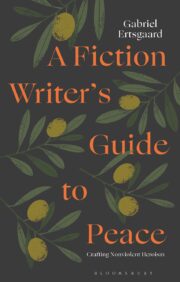How to Know When You Are Done Revising
by Cat Rambo
 One question comes up more than any other when I teach writing: how do I know when a piece is ready for submission? The way I do it is by breaking down revision into a three stage process. When you finish the last step, start sending it off, and don’t revise between submissions (unless someone gives you amazing advice). Figure out 3-5 markets and as soon as it comes back from one, send it to the next.
One question comes up more than any other when I teach writing: how do I know when a piece is ready for submission? The way I do it is by breaking down revision into a three stage process. When you finish the last step, start sending it off, and don’t revise between submissions (unless someone gives you amazing advice). Figure out 3-5 markets and as soon as it comes back from one, send it to the next.
Here are the stages of revision. Before you start them, you must a) have a first draft and b) set that draft aside to cool for a while. Stephen King suggests putting a novel aside until you no longer think about it on a daily basis. With a short story, give it at least a week, preferably two.
And that first draft can be terrible. Really. You’ll be able to fix it. The first draft is just you flailing around. That’s perfectly natural. You throw words, sentences, paragraphs and scenes onto the page, perhaps in the order that they will stay in, perhaps in a totally different assemblage. That’s okay. You have the words.
Stage I of the Revision Process: This is where you figure out your plan of attack. Read through, with a notebook handy for jotting stuff down if it occurs to you but mainly focusing on the manuscript. Keep track of holes, scenes that still need to be written, as well as major changes. I print out a copy and I write all over it; append things, scratch things out, move pages from here to there.
Focus on big ticket items, things that affect the manuscript at the top level: moving scenes around, changing POV or verb tense. Making sure that the chronology is correct, particularly when working with multiple view points. Think about the characters.
Are they likable – do the reader have some point of identification with them? It can be something very small, such as showing them taking care of something like a pet or plant. Are their motivations clear? Do you know what they want, what’s keeping them from getting it, and how they plan to change that situation? Do you have some sense of their history before they entered the piece, and how can you reflect that in the piece? Where can/should you go more deeply into their head?
What’s the overall story arc? What’s the human experience at the heart of the work; what’s it trying to say about being an intelligent self-aware entity? What promises are you making to the reader and where don’t you live up to them? Where can you make things clearer for the reader? Are there missing scenes? If so, write them now.
What’s the pacing like; are you moving the story along in a smooth flow that pulls the reader in? If not, where are you failing to do so?
What’s the world like? How can you keep it from being generic? What details does your reader need to know and where have you forgotten to supply such information? How does the world feed into the theme of your story? Where are the cool eyeball kicks and nifty things that will entertain your reader?
Don’t fix things about the style or other sentence level considerations, but keep a list of these that you’ll be able to address in a later stage.
Stage II of the Revision Process: You marked all over the printout, making changes and then incorporated them. Here I print out a fresh copy, because unfortunately my process is not particularly eco-conscious.
Now you’re looking at a finer level than the first pass. Stage I was coarse sandpaper; now you’re moving to a finer grade. This is the point where I look hard at paragraphing, splitting up overly long paragraphs, using single sentence paragraphs for an occasional punch, and making sure the first and last paragraph of every scene works, creating a transition that doesn’t allow the reader to escape the story.
I have an unfortunate propensity for scattering scene breaks through my work; this is the place where I remove a lot of them, because I know that every time one occurs, it bumps the reader out of the story and reminds them that they’re reading. I also remove a lot of unnecessary speech tags at this point. I make sure the speaker is identified every third or fourth speech act in two people dialogue so the reader never has to count back in order to figure out who is talking at any point.
I’m also looking at sentence length. Here is an exercise that may be useful: take a page of your prose and go through counting how many words are in each sentence. If they are all around the same length, it creates a sense of monotony. Split things up. Short sentences have punch; long sentences full of polysyllabic words create a languorous, dreamy feel that may be desirable to your narrative yet radically slows things down on the page. (Did you catch what I did there?)
Stage III of the Revision Process: Once again, edits are made on the computer and printed out. Time for your very finest grade of sandpaper, the last few passes. In this, I rely heavily on Ken Rand’s excellent little book The 10% Solution, which I cannot recommend heartily enough. This is the point where you pick up individual sentences and tap them to make sure they ring true.
Above all this is the stage where you read aloud. If you do not read your work out loud and you take only one thing away from this essay, please make it starting to read your stuff out loud. You will catch errors and repeated words. More importantly, you will catch infelicities and ungraceful sounds.
And this is how you know you are done. Once you have done this once, perhaps more depending on your degree of perfectionism, the story is ready to have a cover letter attached and to go out into the world. Celebrate briefly, then go work on a new piece.
•••
Cat Rambo is the president of SFWA. Her 150+ fiction publications include stories in Asimov’s, Clarkesworld Magazine, and Tor.com. Her short story, “Five Ways to Fall in Love on Planet Porcelain,” from her story collection Near + Far (Hydra House Books), was a 2012 Nebula nominee. Her editorship of Fantasy Magazine earned her a World Fantasy Award nomination in 2012. Her most recent book is her debut novel, Beasts of Tabat. For more about her, as well as links to her fiction, see http://www.kittywumpus.net, where this post first appeared.
If you’re interested in learning more about writing, visit The Rambo Academy for Wayward Writers for a list of courses and online course schedules.


